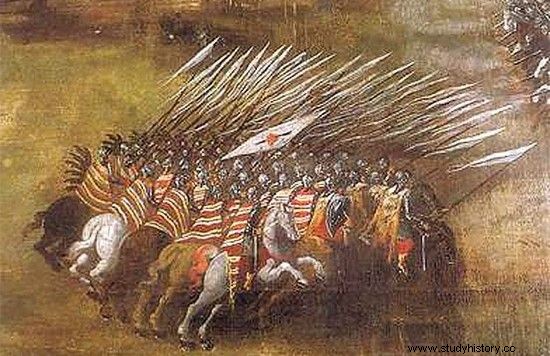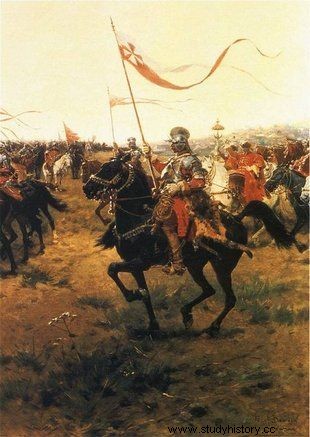In the famous battle of Khotyn in 1621, the Poles won despite the sixteen-fold advantage of the Turks. Near Kluszyn in 1610 there were 14 or even 18 times more Muscovites, and our cavalrymen won anyway. Is this the peak of the Polish hussars? No way. The real record was broken in a completely forgotten clash near Kutyszczami.
Historical books teach that hussars - as one of the most effective cavalry formations in modern times - were able to defeat even a several times larger enemy, if only used correctly. The year 1660 proved that her possibilities were much greater, and her greatest success in history was ... by complete accident.
The thing is happening right after the end of the Swedish Deluge of the Peace of Oliwa, and also a few years after Bohdan Chmielnicki sold himself to the Russians. The sovereignty of Poland over the south-eastern borderlands and the belonging of Ukraine were still open.

At Kluszyn in 1610, the Muscovites had a 14 or even 18 times advantage. However, this is still nothing. At Kutyszczami, the hussars defeated an enemy with a 25-fold advantage!
In the late summer of 1660, the combined Russian and Cossack troops in Ukraine numbered about 31,000 soldiers. Although there were twice as many Polish soldiers, the support of the Tatars leveled the chances. Initially, the Russian commander - Vasyl Sheremetev - suspected that the Polish forces were in fact much weaker and was getting ready for a battle.
One in twenty-five? What is this for a hussar
Only the captured prisoners revealed to him that he could not be sure of victory at all. In this situation, he decided to quickly withdraw and join another Cossack army operating in Ukraine - the army of 20,000 soldiers of Jerzy Chmielnicki. The Poles could not allow it.
However, Sheremetev did not lack his cunning and marched almost imperceptibly with the army from the camp at dawn on September 26, 1660 . The only thing left for the Polish side was to undertake a mad pursuit of the enemy. The Polish hussars did not manage to catch up with the main forces, but the Russian army was followed by its armed-to-the-teeth rolling stock much slower.
Poles found him near the village of Kutyszcze. It was protected by two regiments:one of the Russian cavalry (reiters) and one of the Cossack infantry. In total, opponents were probably around 3000-3500 (and possibly even more).

Near Kutyszczami, only 140 hussars defeated about 3000-3500 Muscovites (source:public domain).
The Polish pursuit was incomparably less impressive:it consisted of only two battered Hussar banners, with actually around 140 cavalrymen . Despite the gigantic disproportion of forces, the commander of one of the banners - Władysław Wilczkowski - decided to lead the charge, with the participation of only several dozen horsemen . Only with some delay, the second banner, under the command of Stanisław Wyżycki, joined the fight.
Radosław Sikora, author of the book "Extraordinary battles and charges of husaria" reports:
During the hussars' charge, the raiders managed to fire several rifle volleys in its direction. Despite this shooting, the losses of Poles were minimal. Among the people, only the son of Piotr Ozga's subordinate from Lviv was injured in the knee. (...) The Russian cavalry could not withstand the impact and started to run away. The running raider confused the Cossack infantry. The hussars took advantage of this and continued their attack, entering the Cossacks' ranks. Those, having no field cover to protect them from Polish cavalry, threw themselves to the ground.
The completely unplanned attack did not affect the fate of the campaign much, but it undoubtedly sowed panic fear among the Muscovites of the Polish cavalry. After all, the hussars managed an amazing feat - they won a battle in which the enemy had a 20 or even 25 times advantage with almost no losses!
Source:
Trivia is the essence of our website. Short materials devoted to interesting anecdotes, surprising details from the past, strange news from the old press. Reading that will take you no more than 3 minutes, based on single sources. This particular material is based on:
- Radosław Sikora, Unusual battles and charges of hussars , Erica Publishing Institute, 2011.
